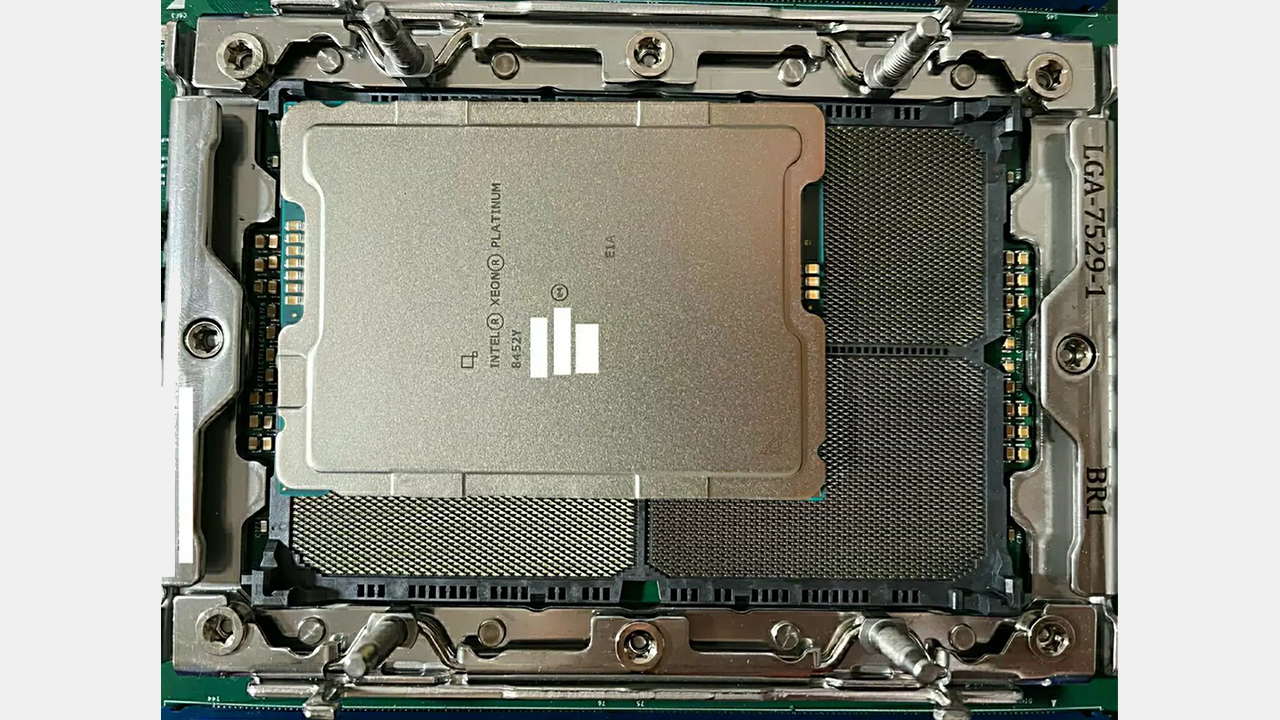
Detailed Image of Intel's LGA7529 Socket Leaks Online
You thought that Intel’s LGA4677 socket for 4th Generation Xeon Scalable ‘Sapphire Rapids’ processors was massive? A detailed image of Intel’s next-generation LGA7259 socket emerges (courtesy of Marvin Sevilla aka @SprayOnCopper) and demonstrates that this future socket is far larger than the current design. In fact, LGA7259 can probably challenge AMD’s SP5 socket with 6,096 contacts.
Measuring 61 × 82mm without retention mechanism, Intel’s LGA4677 for Xeon Scalable ‘Sapphire Rapids’ and ‘Emerald Rapids’ CPUs is already quite a massive socket. Yet, as the image published by Marvin Sevilla shows, it is considerably smaller than the company’s upcoming LGA7259 socket for Intel’s Granite Rapids and Sierra Forest CPUs that will pack more cores and will consume more power than Intel’s previous offerings.
The actual dimensions of Intel’s LGA7259 are not publicly known (they are available to developers, of course), but based on what we know about the dimensions of Intel’s current 4th Gen Xeon Scalable CPU, it looks like we are dealing with a socket that measures approximately 66 × 92.5mm including retention mechanism. Yet, AMD’s 6,096-pin SP5 socket for EPYC ‘Genoa’ and ‘Bergamo’ processors has a footprint of 93.4mm × 120.3mm with retention mechanism so it dwarfs both Intel’s LGA4677 and LGA7259.

Intel’s 4th Generation Xeon Scalable ‘Sapphire Rapids’ processors have a thermal design power of up to 350W, yet the peak power delivery limit for an LGA4677 socket is 764W, according to media reports. Intel’s next generation CPUs in LGA7259 package are said to feature a TDP of around 500W, so their peak consumption will likely top 1 kW.
Meanwhile, in addition to more power, Intel’s LGA7259 socket will enable a 12-channel DDR5 and DDR5 MCR memory subsystem and some additional I/O, so far it seems that not all extra lanes are going to be used for power.
What remains to be seen is how much Intel’s LGA7259 socket will cost. Modern sockets with thousands of contacts with tiny pitches (Intel’s LGA4677 features a grid spacing of 0.81389 × 0.9398mm) are hard to make and therefore expensive. Depending on where you buy, they cost between $101 and $124 per unit in 10,000-units quantities. Intel’s LGA7259 is considerably larger and has more contacts, so it is reasonable to expect that this socket will be even more expensive than its predecessor.
Socket costs only account for a tiny part of a server bill-of-materials, so the 7259-pin socket itself will hardly have a substantial influence on next-generation server prices. Yet, keeping in mind that CPU power consumption grows with the number of pins, server platform makers have to use not only more expensive sockets, but more advanced voltage regulating modules with more durable components, more capable cooling systems, and higher wattage power supplies, among other things.

